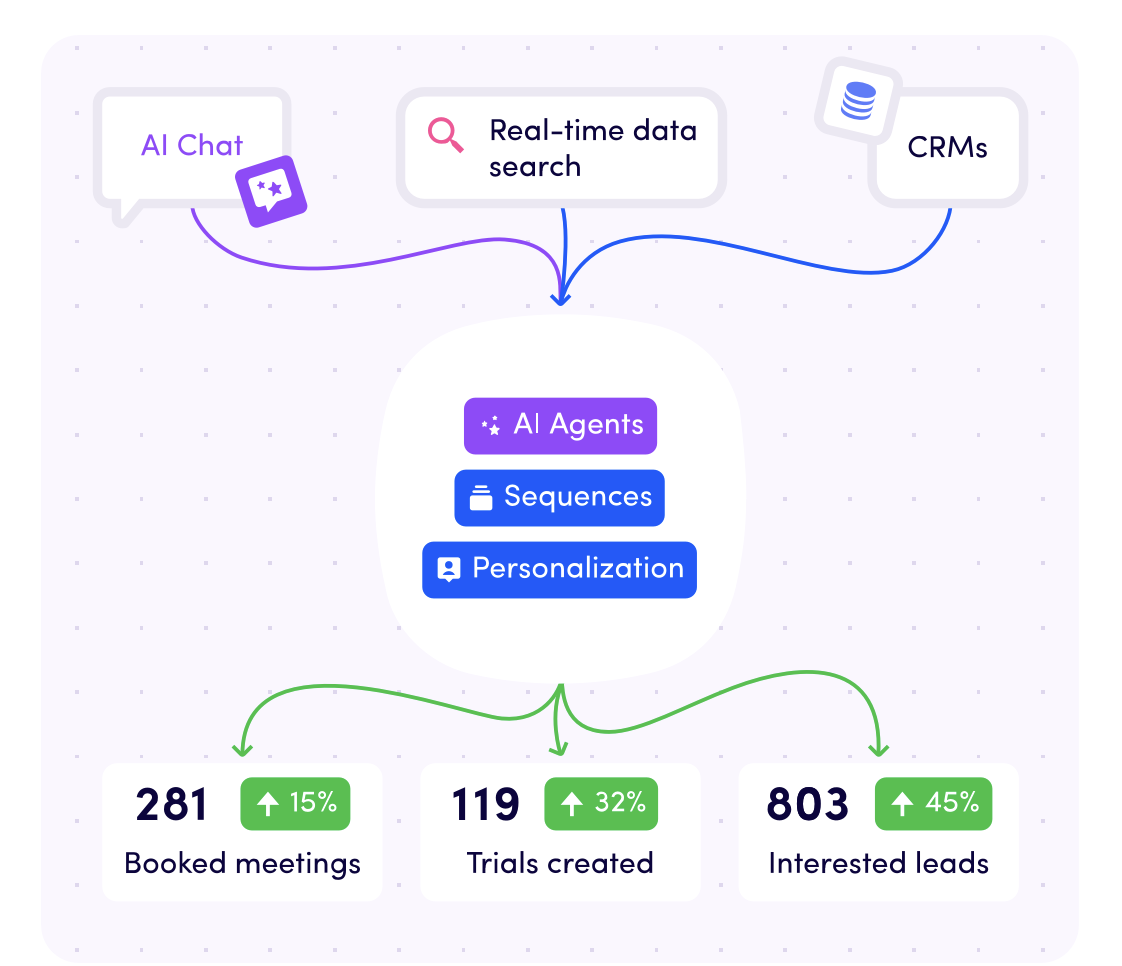The Growth Hacking Process: A Step-by-Step Guide

*Updated on August 1, 2024
Growth Hacking isn’t a magical solution or a quick fix. It’s a systematic process involving continuous experimentation, measurement, and refinement. Success comes from rigorously testing strategies and adapting based on data.
There’s no single trick—just a disciplined approach to achieving growth.
Fall in love with the process, and the results will come — Eric Thomas
Have a quick look into the Growth Hacking Process:
- Find Product-Market Fit
- The five prerequisites to implement the growth hacking process in your organisation
- Implement Rapid Experimentation (G.R.O.W.S)
- Develop Playbooks to Iterate and Scale
Do you adhere to a structured approach for researching, prioritising, designing, testing, and accurately analysing growth experiments?
No?
Then your growth experiments are not very likely to bring you more paying customers.
Whether it's Airbnb, Uber, Booking, or other rapidly growing companies, they didn’t find their growth strategies through random ideas.
Discovering “silver bullets” resulted from hard work and a strict process.
A “Magic Growth Hack” that works for all of us doesn’t exist.
Besides, stating that all the “hacky” techniques such as - scraping, black hat marketing, automation, virality, etc. – can be super powerful to push a company’s growth, misses something crucial…
Beyond the Buzz – Growth Hacking is a step-by-step process!
Ok, enough small talk!
Let's dig into the growth hacking methodology, particularly with a focus on the process of rapid experimentation that many successful tech startups have used to scale their businesses.
Step 1 – Finding Product-Market Fit
1 — A fast-driven growth process is useless if you haven’t achieved product-market fit
If your product or service doesn’t have a Product Market Fit, a growth team won’t be of much help…
Attempting to scale a product before confirming its appeal and continued use by your users is illogical.
End of story.
During this phase, your primary concern should be providing the appropriate product to the suitable market.
Embrace the lean startup growth hacking approach and strategy, identify your potential customers, comprehend their requirements, and create an exceptional product that will convert them into your initial advocates.
Indeed, this process may require time and numerous modifications, but you would likely concur that attempting to expand a subpar product is an even greater waste of your time.
2 — How do know you have reached product-market fit?
The Sean Ellis “Very Disappointed” Method
- You send a questionnaire to your active users
- You pose the question: "what would be your reaction if you were unable to use our product from tomorrow?" and they have the options to select from "extremely upset", "somewhat upset", "not upset at all", and "I no longer use this".
- After segmenting your responses, if 40% or more of your respondents are “very disappointed”, you’ve reached the threshold for Product Market Fit.
For some products, this approach can be harder to use, which is why some Growth Hackers prefer Brian Balfour’s method.
The Brian Balfour Trifecta Approach
- Your merchandise exhibits a significant degree of organic revenue growth → Merchandise that fits the market typically receives recommendations and enjoys organic growth.
- Your merchandise has excellent user retention → your user retention is high, and your attrition rate (if relevant) is low. For example, Snapchat once had 50% of its users active daily.
- Your customers are using your merchandise appropriately → you need to be truthful about what constitutes a significant use of your app or product. If you operate an online job board for startups and each startup posts a job every quarter, that's likely fine! But, for a tool like Slack, it might be sending a message twenty times a day.
3 — Is Growth Hacking useless before Product Market Fit then?
Putting a fast-paced process for experimentation into place doesn’t make sense before PMF.
But, as you can see below, there is an overlap between the Problem/Solution Fit phase and the PMF phase in which it could make sense to apply Growth Hacking (GH).
At this stage, GH can be applied to identify growth opportunities for products by looking at data and usage patterns.
The Bullseye Template developed in the book Traction can be downloaded here.
4 - Identify the optimal point to implement the Growth Process
It's evident that concentrating on the appropriate strategy at the correct time can elevate your startup to new heights.
If you want to know more, consider reading this article here.
My team and I are currently in the “Transition Phase” at Les Sherpas.
Les Sherpas, an educational technology startup, was part of the inaugural cohort of the Founders Program by Station F, a French incubator housing over 1000 startups on its premises.
A year following the launch of our initial Minimum Viable Product, our web-based tutoring service for secondary and tertiary education institutions hit the milestone of 10,000 hours of lessons delivered via the platform.
We’re now looking to grow faster to reach the 30,000-hour mark in the next scholar year!
STEP 2: The five prerequisites to implement the growth hacking process in your organisation
Check out this YouTube video by Growth Tribe in which David Arnoux explains the GROWS process step-by-step.
Once you’ve reached product-market fit, it’s still a long way before you can start implementing the Growth Process.
You’ll need everyone involved in this process to make it a success.
The success of this process hinges on the participation of all involved.
To do so, clearly define the first 5 prerequisites before you start experimenting → the Business Model Canvas, the Value Proposition Canvas, your Personas, the Pirate Funnel and, your OMTM.
Don’t you know what these are? Let’s break them down!
1 — The Business Model Canvas
The Business Model Canvas is a tool used in strategic management and lean startups to create or outline existing business models.
It’s a visual chart that includes key elements such as a company’s or product’s value proposition, infrastructure, customer segments, and financial aspects.
It visually describes what your company does on a single page.
It's quite beneficial to provide a summary, facilitate the integration of new members, and ensure everyone has a fundamental comprehension of your past endeavours (years or months?).
2 — The Value Proposition Canvas
As a component of the Business Model Canvas, it's worthwhile to delve into this aspect as it encapsulates the essence and worth of your product.
With this canvas, you can visualise your target audience and how your value proposition is tailored to make them appreciate your product.
In case you are a founder, are you certain that the rest of your team understands it as well?
Regardless, it's always a good idea to ensure that everyone is aligned.
Furthermore, as Phil Morle elucidated here, the subsequent stage after completing the template is "to determine whether this is merely an idealised value proposition you've envisioned, or if it's grounded in your customers' behaviour." (you should aim for the latter option).
3 — The Personas
A persona is a hypothetical profile that symbolises a brand's audience.
Creating a persona assists you in personifying the audience and targeting it more precisely.
Why should you establish your personas?
The goal is to effectively empathise with your customers, attempt to visualise their thought processes and behaviours, and ultimately provide a solution to their issue.
Once accomplished, selling your products becomes significantly easier as you understand their needs.
For instance, your approach on social media platforms will differ if you're addressing Alicia, a recent hire in a tech startup's human resources department, versus Philippe, the sales director of a well-established firm.
How do you construct your personas?
There are certain guidelines you need to adhere to.
1. Focus on Key Personas:
Limit yourself to the three most important fictional personas.
While it's understandable to want to reach a broad audience with your product, it's more efficient to develop a targeted strategy for these specific personas.
Once you've achieved the desired impact with this focused approach, you can expand gradually.
2. Detailed Persona Definition:
Follow a rigorous process with precise questions to better define your typical personas.
Beyond basic details like name, age, job role, and demographics, delve into deeper aspects.
Consider the following:
- What are the essential aspects of their personality? (Use models like the Big Five or MBTI for guidance.)
- Where do they spend their time?
- How do they behave online?
- What does a typical day look like for them?
-
What do they need and aim to achieve?
-
How are they addressing their problems right now?
- What alternatives to your product are they using?
3. Validate and Refine:
Test your assumptions about these personas by observing how they respond to your messaging and persuasion strategies.
If the results are inconclusive, refine your persona definitions and continue testing until you achieve clear and conclusive results.
4 — The Pirate Funnel
The Pirate Funnel, developed by Dave McClure, is a valuable framework for mapping and optimising your marketing funnel according to the customer lifecycle.
The main concept is that users follow a similar journey with every product, represented by the AAARRR stages.
Here’s a brief overview of these six steps and how you can apply them to your own business.
Three key points for designing your Pirate Funnel:
-
Define Customer Actions and Metrics: Clearly outline the actions customers take throughout their journey and identify which metrics indicate their level of interest (soft conversions) or intent (hard conversions).
For example, Awareness could be measured by website traffic, with metrics such as monthly unique visitors. For Retention, you might track the number of people who invite friends, measured by the viral coefficient. -
Adapt the Funnel to Your Business: The order of the funnel stages can vary depending on your business model. The standard e-commerce funnel might differ from a SaaS or subscription model, which might follow a sequence like awareness → activation → retention → referral → revenue. Customise the funnel to suit your specific business needs.
-
Segment by Customer Type: Understand that your product or service may have different funnels for different customer segments. For example, a company like Hotjar may have distinct funnels for small startups and agencies, while Airbnb’s hosts and guests experience different customer journeys.
5— The OMTM
At any given time, there’s one metric you should care about above all else. – Lean Analytics , Croll & Yoskovitz
The One Metric That Matters (OMTM) is the one metric you focus on above everything else.
It makes it easier to design and have meaningful experiments since you know what to focus on.
The long-term focus is your North Star Metric (NSM).
This is the direction you go towards, and all decisions and OMTMs along the road should help you get to that NSM.
Imagine being on the road towards that north star, but a mountain suddenly stands in your way.
You have to come up with a different short-term goal of overcoming that mountain.
This could be your OMTM for a month for example.
Two things to keep in mind regarding this topic:
- You don’t focus on the OMTM exclusively forever.
See it as a focus for a predefined period. This will change once you get to the target metric/date. Then you decide whether it’s still the most important metric to focus on.
As an example, at Les Sherpas, my startup, our current OMTM is the conversion rate after the free trial, and our NSM is the number of hours given on the platform per year. But our OMTM used to be retention when we were focusing on achieving product-market fit.
- You’ll always track and review multiple numbers.
These are your key performance indicators (KPIs), which you’ll track and report every day to get more data-driven decisions even though the most important one is the OMTM. Other metrics will be stored away for future use, such as when it’s time to tell the company history to an investor or to make an infographic.
Setting up and managing instrumentation is relatively easy these days with tools like Geckoboard, Mixpanel, Kissmetrics, etc. Anyway, don’t let your ability to track so many things distract you. So, yes, why not capture everything, but above all, focus on what’s important?
STEP 3: Implement a Process of Rapid Experimentation (G.R.O.W.S)
Now that we have the five prerequisites done (STEP 2), let me take you through a step-by-step guide on how to implement the G.R.O.W.S loop within your organisation.
It doesn’t matter whether you apply the Sean Ellis or Growth Tribe approach (G.R.O.W.S), the Growth Marketing Process will ensure you can experiment rapidly and find huge wins for your business.
1 — Gather Ideas (G) of G.R.O.W.S
During that phase, your team should generate hypotheses for growth experiments that are likely to improve your OMTM.
How to come up with impactful ideas?
- Observe your Market. Best Practices, Ebooks, Trends, Articles, Competitor Piggybacking, etc.
- Do some Research (Quantitative and Qualitative). If Quantitative Data (Analytics, Heatmaps…) tells you what, where and how much, Qualitative Data (Usability Testing, Surveys, Customer Feedback…) often shows you the ‘why’ your customers are behaving like this or this. Qualitative will enable you to peek inside the mind of the people you’re trying to sell to.
How to insert new ideas in the pipeline?
“The Growth Lead has to set up a project management system to coordinate easily the submission and management of ideas, as well as the tracking and reporting of results. The more ideas that go into your pipeline, the better your chances of finding winners that spur growth.” – Sean Ellis, Hacking Growth
First, if you don’t know how to set up a project management system (CRO tool) for your team, you can use Effective Experiments or even some Airtable Free Templates (I’ve designed my own freely on this tool).
Once this is done, focus on the formatting part of each idea which should be the same to rank them after easily.
You can follow this flow:
Concept Title: Brief and Precise → Maximum 50 characters.
Concept Explanation: The 5Ws and H (Who, What, Where, When, Why, How) of the Concept.
Theory: Formulate your supposition in a straightforward, clear, and verifiable manner. It should be a basic prediction of anticipated cause and effect.
A preferred way to express the theory is as stated by the Dutch agency Online Dialogue: If "this modification is implemented," then "these metrics will change" for "this user segment," based on this "behavioural rationale."
Metrics for Evaluation: Specify the Quantitative and Qualitative Data that will be evaluated and remember to include the minimum success benchmark for this experiment.
2 — Prioritise Concepts (R) of G.R.O.W.S
At this point, you should have a backlog of exceptional concepts.
Before our sprint meeting, ensure to rate your concept in the project management software!
Although it may seem tough initially, you'll find it becomes simpler with practice as you familiarise yourself with industry standards and past experiment results.
You have a plethora of options as many models have already proven to be quite effective.
In our startup, we typically utilize the ICE model (Sean Ellis's method), but the BRASS and PIES model from Growth Tribe is also an option (refer to this Youtube Video). The choice is yours!
Keep in mind that ideas with high impact scores (high Impact Score) often demand more effort and seamless execution is crucial.
Therefore, it's always beneficial to have some easy "low-hanging fruit" tests to conduct without needing weeks of preparation for the launch.
Also, avoid spending excessive time pondering over the scoring as the Growth lead can always modify it if they identify any problems that the submitter overlooked.
The objective is to maintain the team's momentum.
Despite undergoing the evaluation procedure and condensing a list of experiments you're keen to attempt, you'll probably still be left with more concepts than you can examine in the upcoming week.
Hence, the strategy is:
- Ask everyone to choose only two or three ideas as candidates for this week's experiments.
- These “most promising” ideas will be presented and reviewed at the growth sprint meeting (every week or every two weeks usually), where the experiments to be run will be chosen.
- The growth team will score the ideas collaboratively according to its assumptions and select the experiments to be run with the highest ICE score. As an example, we often take two of them in my startup since we still are limited regarding resources, but it can vary from one week to another.
3— Outline Experiments (O) of G.R.O.W.S
Assuming your Growth Meeting is complete and you have two experiments set to launch this week, how should you structure your team to design these experiments?
“Done is better than perfect” – Sheryl Sandberg
-
Keep it fast and simple.
At this stage, focus on creating fast and simple experiments rather than perfect ones. The aim is to quickly determine if the experiment has potential. Speed is crucial in this growth phase. If the experiment shows promise, you can invest more time in refining it. If not, you won't have wasted too much time on it.
- Encourage your team to work together and act quickly.
As your team grows (yay for adding more members!), consider organizing your process as follows. - Defining Key Roles for an Agile Growth Team.
A Growth Lead who focuses on processes, a Developer who rapidly builds, tests, and fixes, a UX/UI Designer comfortable with "less polished" designs, and a Data Analyst skilled in processing data and drawing insights.
As the team expands, additional roles such as digital marketers and extra developers can be added.
4 — Work, Work, Work (W) of G.R.O.W.S
“Sometimes you gotta run before you can walk” — Tony Stark, alias Iron Man
During that phase, the design of your experiments is finished.
So… let’s get the shit done.
Make sure that you are doing 20% of the work that produces 80% of the results!
You’ll have time to adjust this experiment and double down on it if it’s promising. As the quote says, “Work Smarter, Not Harder”.
I decided not to focus too much on this part since I feel that every company will have a slightly different way to organise itself to get things run.
I would only recommend focusing on applying the principles of Agile Scrum for Marketing.
If you’re not familiar with it, I highly recommend this article from ConversionXL.
5 — Study Data (S) of G.R.O.W.S
“Sometimes, things may not go your way, but the effort should be there every single night.” – Michael Jordan
Let’s be crystal clear. This phase is one of the most difficult ones for two main reasons:
- The chances not to get (or even worse) results are quite high. Don’t get depressed, it’s normal. Before finding the sweet spot that gonna fuel your growth, you’ll probably end up launching many failed experiments.
- Analysing an experiment is not easy. This part should be done carefully by the Growth Lead with the Data Scientist (if there’s one) since you could have false positives or wrong assumptions.
Knowing that you usually go through three phases when it comes to analysing the results of an experiment:
- Your experiment is over (after one to three weeks usually to avoid seasonality) and is awaiting evaluation.
- The Growth Lead analyses the results following a template he has created to evaluate each experiment. (see left image)
- The Growth Lead puts the experiment in one of the following categories to determine the next steps: Inconclusive, Failure not valuable to Tweak, Failure valuable to Tweak, Success & continue exploring, and Success & scale.
So, once you have finished this phase, you can go back into the G.R.O.W.S loop and make experiments again and again.
Don’t forget to use this analysis phase to end up with some actionable learnings for your next experiments.
To do so, you can think about segmenting your audience (by country, by mobile vs. desktop, by the number of products in the cart, etc.).
Even if the chances of having a false positive are higher, it’s still interesting to have this data, notably for launching new experiments.
Examples:
- Across all variations, the feature module below the fold increases conv. rate for new users.
- The presence of the new theme produced a 1,4% uplift in CTR from the homepage for desktop users.
Some thoughts about A/B Testing
You’ll be able to do it only if you have enough traffic and conversions.
Ideally, you should always have 1000 conversions on the thing you want to increase with your A/B test.
Before reaching this “optimisation phase”, you’re usually in the lambs of early-stage startups trying to get their first customers, so it’s all about taking risks.
Don’t focus too much on small fine-tuned A/B tests and go for big changes.
If you’re in that case, do big tests (a lot of changes at the same time) with a big impact such as multivariate tests.
How to make sure that your A/B Test is correctly analysed?
A hard question since I’m not a specialist but here are some learnings I discovered.
First of all, you have to decide which statistical approach you’re going to embrace to declare your variation as a winner.
“There’s a philosophical statistics debate in the optimisation world: Bayesian vs Frequentist.” (ConversionXL)
When you’re going to select one, you should have three things in mind:
- Velocity
- The risk you’re willing to take
- Communication
- Risk: In the research domain and an optimal world, I would say that this method is more likely to bring you nearly “perfect” statistical results. In this one, you will declare the variation (vs. the controlled group) as a winner only if it reaches the statistical significance level you were looking for (95% or 99% usually).
- Velocity: Nevertheless, the rapid experimentation process can slow down a little bit if you’re using this approach since you need to reach these high thresholds before implementing an experiment declared as a winner.
- Communication: Statistical significance, p-value, power, beta… Hum, all these “nice” words don’t help you when it comes to explaining your experiments to the rest of your team.
- Risk: We’re in a business world with a lot of variables to take into account that could also impact your experiment (special promotions, holidays, weather, etc.).
Plus, if you’re still in the “transition phase” and not really on a perfect fine-tuning optimisation model, reaching 99% significance may not be your primary focus.
In that case, you could define thresholds such as 80% probability → the variation is declared as a winner. 75% and below → Retest. 85% → Implement it and use it for the next experiments.
It’s all about the risks you’re willing to take to make your business thrive. While your company is growing, you can make these thresholds evolve. - Velocity: The risk is higher but the velocity is usually also higher.
Since you don’t need super high thresholds significance, you can design even more quick and dirty solutions and double down on them if it’s a success. - Communication: It’s much more transparent e.g. “The chance of variation B outperforming controlled group A is 84,4%”.
Step 4 – Develop Playbooks to Iterate and Scale
You should always have a knowledge base where you store all the experiments you did in the past with the assumptions and the results you had.
It will avoid launching the same failed experiment multiple times and will facilitate the onboarding of new employees in the Growth Team because they can see the process you’re doing.
Plus, it can be nice to have for your stakeholders to follow.
Besides, many highly successful teams send out regular communication within the company to keep employees up to speed on the growth process.
So, consider creating a channel on Slack dedicated to the sharing of test results and discussion about them.
Besides, many highly successful teams send out regular communication within the company to keep employees up to speed on the growth process.
So, consider creating a channel on Slack dedicated to the sharing of test results and discussion about them.
Did you get the Rapid Experimentation Process? Let’s get to work then!
FAQ
1. What is growth hacking, and how does it differ from traditional marketing?
Growth hacking is a data-driven approach focused on rapid experimentation across marketing channels and product development to identify the most effective ways to grow a business. Unlike traditional marketing, which often relies on established methods and long-term campaigns, growth hacking emphasises agility, innovation, and leveraging unconventional tactics to achieve fast, scalable growth.
2. How can a growth hacker use content marketing to attract new customers?
A growth hacker can use content marketing by creating valuable, shareable content that attracts potential customers through organic search and social media platforms. This might include blog posts, video content, and other forms of media designed to engage and inform the target audience, ultimately driving traffic and conversions.
3. What role do email campaigns play in a growth hacking strategy?
Email campaigns are a critical component of growth hacking, as they can be used to nurture leads, engage current customers, and drive conversions. By segmenting email lists and personalising messages, growth hackers can effectively target different audience segments with relevant content and offers, enhancing user experience and increasing engagement.
4. How do referral programs contribute to growth hacking?
Referral programs are a powerful tool in growth hacking, incentivising current customers to refer new users. This strategy leverages social proof and the trust existing customers have in a product or service to acquire new customers at a lower cost than traditional marketing efforts. Effective referral marketing can significantly expand a company's user base.
5. What are some examples of growth hacking techniques used by successful companies?
Successful companies like Dropbox and Airbnb have employed growth hacking techniques such as offering incentives for referrals, optimising onboarding experiences, and creating viral loops. For instance, Dropbox gave additional storage space to users who referred friends, while Airbnb used targeted content and SEO strategies to dominate search engines.
6. How can Google Analytics be utilised in the growth hacking process?
Google Analytics is an essential analytics tool for growth hackers to track and analyse user behaviour, website traffic, and conversion rates. By monitoring key metrics, growth professionals can identify successful strategies, pinpoint areas for improvement, and make data-driven decisions to enhance overall growth strategies.
7. What is the 'true north' metric, and why is it important in growth hacking?
The 'true north' metric is the single most important metric that a company focuses on to drive sustainable growth. It serves as a guiding star for the entire team, aligning efforts and ensuring that all growth marketing strategies and tactics contribute to the primary growth objective. This metric varies by business and could be related to user acquisition, engagement, or revenue.
Categories
- Business & Innovation (83)
- Growth & Marketing (72)
- Artificial Intelligence (52)
- Data & Analytics (16)
- Case studies (10)
- Project Management (10)
Related articles
Learn more about growth marketing


Take your marketing to the next level. Become an expert in the tools, techniques and strategies that the world’s leading marketers use to drive growth.
View certificate
Learn more about growth marketing


Take your marketing to the next level. Become an expert in the tools, techniques and strategies that the world’s leading marketers use to drive growth.
View certificateLatest articles
ChatGPT Search Unveiled: Should You Make The Switch Now?
Picture this: You’re no longer just “searching” the web—you’re...
Shadow AI Explained: How to Harness Hidden AI Without the Risks
Picture this: your team is under pressure to deliver results—fast....
The 33 best AI tools for commercial teams
The tools are split into 2 categories The best AI tools for your...
B2B Growth Blueprint: How to Drive Sales and Build Strong Partnerships
In today’s fast-paced world, B2B companies are like ships...













